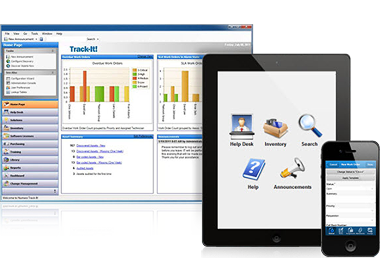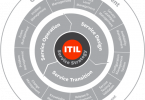This blog is the first in a series on best practices for transforming help desk operations at small to mid-size businesses from reactive to proactive.
Is your help desk team constantly in crisis mode?
Behind the curve, stressed out, and making mistakes?
And worst of all, failing to meet expectations of users (for fast resolution) and management (for high productivity and service levels)?
You are not alone.
Many help desks spend most of their time fire-fighting. They are often overwhelmed by a seemingly endless queue of calls and emails. It’s far from the ideal situation.

Why is this scenario so common?
Help desks in small to mid-size organizations like yours don’t have big budgets for expensive tools or large numbers of help desk staff. Plus, they lack metrics and reporting capability to make a business case for additional resources. The results aren’t pretty: overworked staff, issues falling through the cracks, impacts to service levels, and management and user dissatisfaction.
In my view, the fundamental issue is the need for better technology. Affordable software solutions are available to enable your help desk staff to advance from traditional methods of receiving, assigning, handling, documenting, and measuring issues to more modern and efficient processes. For example, software that offers users convenient new ways to submit requests (such as a web portal or an automatically monitored email box) can replace “fire alarms” – panicked phone calls, office drop-ins or emails to specific staff members. Collecting and tracking all of the reported issues in a central repository eliminates outdated solutions like overstuffed Exchange mailboxes and cumbersome Excel spreadsheets. The best tools also include knowledge bases and self-service portals to encourage users to solve their own issues and to improve overall efficiency.
A tale from the trenches
Below, you’ll see my recommended best practices for minimizing fire drills and maximizing efficiency, productivity, and satisfaction. In upcoming blogs, I’ll go into detail about each of them. But before I present the list, here’s some food for thought.
A real, unnamed organization shared a few of the many drawbacks of its existing system. The Exchange email box – the only method for submitting issues — was shared by the help desk technicians. All five received every email. When a request landed in the box, someone was supposed to take ownership and reply to the rest of the team that it was being handled. Unfortunately, things did not always go as planned.
- Simple issues were popular, and sometimes two people jumped on a fix immediately and forgot to let their teammates know. The result: wasteful duplication of effort.
- Complicated issues – not so popular – were sometimes ignored.
- If the go-to person for a particular fix was out of the office, requests were postponed while everyone waited for the technician “expert” to return. As a result, many times this issues were buried in the email box and fell through the cracks.
- If someone resolved a particularly complex problem, that knowledge was not documented, forcing other technicians to reinvent the wheel over and over again.
- Lack of measurement and reporting capability prevented the team from determining metrics such as volume, productivity, and satisfaction, and tracking trends.
Bottom line, the box became jammed with hundreds of thousands of emails, some left unread. Meanwhile, technicians fell behind – and had no way to justify more people — because they did not have the right tools to lighten their load or document their challenges.
Top 5 best practices
This sad but familiar tale illustrates the need for my first best practice:
- Automate processes: replace catch-all email boxes that are manually monitored with a software system that automatically receives inquiries, creates tickets from them, and then routes and prioritizes them. Ideally, the solution should also automatically generate notifications to users and launch a post-resolution survey.
The other best practices are:
- Empower users: provide alternative channels to log and monitor their issues, including a self-service web portal or a mobile app.
- Build knowledge: implement a searchable knowledge base that help desk staff can use as a guideline for resolving issues and users can consult to solve simple problems themselves.
- Pass the buck on passwords: deploy a password reset utility that allows users to reset their own passwords (one of the most common issues, as you know only too well).
- Measure and report: add reporting capability to identify problem/repeat users and problematic equipment, document workflow efficiency, pinpoint trends, and provide documentation to justify additional budget or staff.
Be sure to read the rest of the series to find out how your help desk organization can make better use of staff time, raise awareness of workflow bottlenecks, boost technical knowledge, increase user satisfaction – and make a bigger contribution to the business.
Track-It! Help Desk software from BMC is the perfect help desk fire extinguisher. It supports best practices and addresses your top pain points – at an affordable price. Find out more at http://www.trackit.com/.
Track-It! Help Desk Software
These postings are my own and do not necessarily represent BMC's position, strategies, or opinion.
See an error or have a suggestion? Please let us know by emailing blogs@bmc.com.







